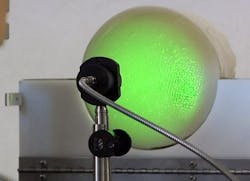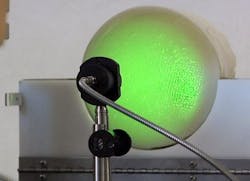Photoacoustic imaging detects breast cancer without ionizing radiation
Researchers participating in the Optical Imaging and Laser Techniques for Biomedical Applications (OILTEBIA) project coordinated by the Charles III University of Madrid (UC3M) in Spain are developing a photoacoustic (optoacoustic) method to detect breast cancer, which could be a promising alternative to mammography or sonogram.
Related: Photoacoustic mammoscopy aims for safer, earlier breast cancer screening
Obtaining photoacoustic images for breast cancer detection is advantageous because, unlike x-rays, it does not require ionizing radiation. Photoacoustic imaging exploits the property of ultrasonic wave generation in tissue when it is illuminated with short, high-energy pulses of light. These signals make it possible to detect concentrations of chromophores (like oxygenated hemoglobin, deoxygenated hemoglobin, and lipids) and map tissue to find angiogenesis (the formation of new blood vessels from other ones), a process that occurs in the malignant transformation of tumor growth, the UC3M researchers explain. During OILTEBIA's European Summer School, which took place September 15-19, 2014, on UC3M's Leganés campus, they held a workshop on how to obtain these kinds of images with their laser optoacoustic imaging system along with a breast tissue simulator.
The researchers also hope to make advances with regard to hardware, like the design of pulsed sources for high-energy laser diodes and laser characterization to generate photoacoustic waves. "As some of the partners in the project are large companies, it is possible the researchers will present designs for some very interesting and innovative devices," says Horacio Lamela, who notes that there is a lot of work on signal processing that might produce new advances, such as 3D-reconstruction algorithms and different types of image fusion, like optical spectroscopy and ultrasonic signal processing. "Using different wavelengths allows us not only to map tissues, but also detect certain substances and their concentrations," Lamela explains.
OILTEBIA is a type-Initial Training Network (ITN) European Union Seventh Framework Programme project. For more information, please visit http://portal.uc3m.es/portal/page/portal/grupos_investigacion/optoelectronics/european_projects/oiltebia.
-----
Follow us on Twitter, 'like' us on Facebook, connect with us on Google+, and join our group on LinkedIn
Subscribe now to BioOptics World magazine; it's free!

